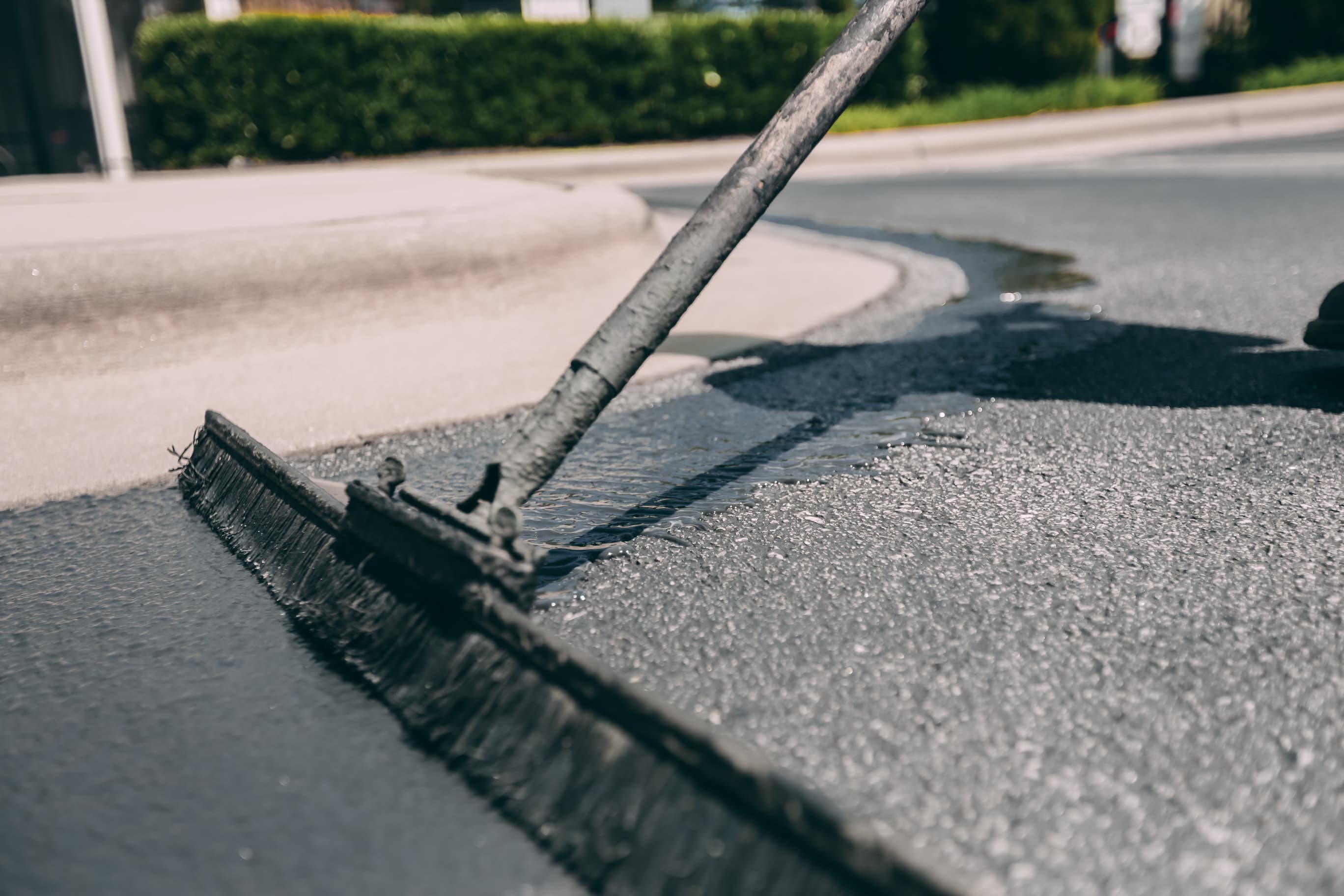Open the Keys of Asphalt Sealing: Making The Most Of Hot Mix Asphalt Long Life
Open the Keys of Asphalt Sealing: Making The Most Of Hot Mix Asphalt Long Life
Blog Article
Hot Mix Asphalt: A Sustainable Service for Pavement
Hot Mix Asphalt (HMA) has arised as a leading sustainable option for pavement services, providing a myriad of innovative innovations and environmental benefits. Its capacity to reuse products and minimize power usage provides a compelling case for its fostering in roadway building jobs. The lasting performance and resilience of HMA make it a favored choice for infrastructure development. As the demand for green building and construction methods grows, discovering the subtleties of HMA's sustainability can offer valuable understandings into the future of sidewalk options.
Ecological Advantages of Hot Mix Asphalt

Furthermore, Warm Mix Asphalt assists to minimize metropolitan warmth island effects. Its dark shade absorbs sunlight, reducing the quantity of warmth reflected back right into the atmosphere compared to lighter-colored sidewalks. This can lower ambient temperature levels in city areas, lowering the need for air conditioning and inevitably reducing energy intake.
Furthermore, Hot Mix Asphalt contributes to enhanced stormwater monitoring. Its permeable nature allows water to infiltrate the pavement and charge groundwater products, reducing runoff and the danger of flooding. These environmental advantages make Warm Mix Asphalt a lasting selection for leading roadways and highways.
Energy Effectiveness in HMA Production
Is energy performance a critical variable in the manufacturing of Hot Mix Asphalt (HMA)? Power plays a substantial function in the production of HMA, influencing both expense and environmental sustainability. One key facet of energy performance in HMA manufacturing is the use of cozy mix asphalt (WMA) innovations.
Furthermore, innovations in plant innovations have brought about more energy-efficient HMA manufacturing processes. Modern plants are made with functions like recycled asphalt pavement (RAP) handling capabilities, effective burner systems, and enhanced insulation, all contributing to power savings. By enhancing energy use in HMA manufacturing, the market can lower its carbon footprint while maintaining top notch pavement materials. Power efficiency is, consequently, an important factor to consider in making sure the sustainability of Warm Mix Asphalt production.
Recyclability of Hot Mix Asphalt
The recyclability of Hot Mix Asphalt (HMA) is a critical element of its sustainability and lasting environmental influence. HMA is one of one of the most recycled products in the USA, with over 100 million lots of redeemed asphalt sidewalk (RAP) being reused yearly in brand-new sidewalk building and construction. Recycling HMA provides a number of ecological advantages, such as lowering webpage the need for virgin materials, lowering energy usage throughout manufacturing, and reducing the quantity of waste sent out to land fills.
The procedure of recycling HMA involves crushing the existing sidewalk, crushing it right into smaller sized pieces, and blending it with brand-new aggregate and asphalt binder to produce a recycled mix. Overall, the recyclability of HMA plays a substantial role in advertising sustainable practices within the sidewalk sector.

Long-Term Efficiency of HMA
Asphalt sidewalks show resilience and durability over a prolonged period, showing the long-lasting performance of Hot Mix Asphalt (HMA) The longevity of HMA can be credited to its capability to endure rush hour tons, extreme weather, and the impacts of aging. Research studies have shown that well-designed and correctly constructed HMA sidewalks can last for two decades or even more with routine maintenance. The key to taking full advantage of the long-lasting performance of HMA depends on making use of high-grade products, complying with best practices in building and construction, and applying efficient maintenance strategies. Correct drain, routine inspections, and prompt repair services are vital for preserving the architectural stability of HMA pavements over time. In addition, improvements in HMA technology, such as using polymer-modified binders and cozy mix asphalt, he has a good point have better improved the durability and long life of HMA pavements. By focusing on high quality construction and upkeep practices, HMA proceeds to show itself as a cost-effective and lasting solution for resilient pavement facilities.

HMA: Resilience and Sustainability
Showing both toughness and sustainability, Hot Mix Asphalt (HMA) has actually become a keystone in the building of long-lasting sidewalk infrastructures - commercial parking lot paving. HMA's toughness stems from its capacity to endure hefty loads, extreme weather, and high traffic quantities, making it a dependable option for roadways, freeways, and airport paths. The composition of HMA, which normally includes accumulations, binder, and filler, plays an important duty in enhancing its long life and resistance to tear and put on
Moreover, HMA's sustainability hinges on its recyclability and energy-efficient manufacturing process. The capability to recycle redeemed asphalt pavement (RAP) in new HMA mixtures lowers the demand for virgin materials and lessens the ecological impact of pavement building and upkeep. In addition, the energy effectiveness of producing HMA depends on its reduced blending temperature levels compared to other pavement materials, causing lowered power consumption and greenhouse gas emissions.
Conclusion
In conclusion, warm mix asphalt (HMA) supplies a lasting option for pavement with its environmentally pleasant attributes. HMA's recyclability, energy efficiency in manufacturing, and long-lasting resilience make it an eco-friendly selection for road construction.
HMA is one of the most recycled products in the United States, with over 100 million lots of reclaimed asphalt sidewalk (RAP) being reused annually in brand-new pavement building and construction.The process of reusing HMA includes milling the existing sidewalk, crushing it right into smaller items, and mixing it with brand-new aggregate and asphalt binder to develop a recycled mix.Asphalt sidewalks demonstrate toughness and resilience over an extensive period, mirroring the long-term efficiency of Hot Mix Asphalt (HMA) In addition, improvements in HMA technology, such as browse this site the usage of polymer-modified binders and warm mix asphalt, have actually further boosted the resilience and longevity of HMA sidewalks. The capacity to reuse recovered asphalt sidewalk (RAP) in new HMA blends reduces the demand for virgin products and minimizes the environmental influence of sidewalk building and upkeep.
Report this page